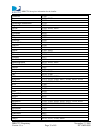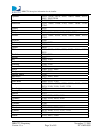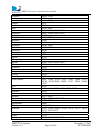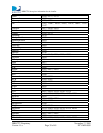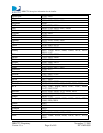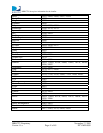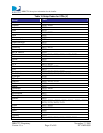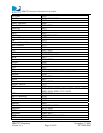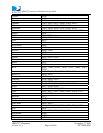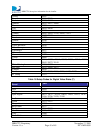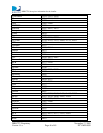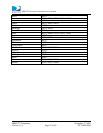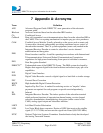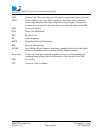
DIRECTV Set-top box information for the installer
DIRECTV Proprietary November 17, 2005
Version 1.1.a Page 48 of 49 DTV-MD-0058
7 Appendix A: Acronyms
Term Definition
APG Advanced Program Guide. DIRECTV’s new generation of the electronic
program guide.
Blackout An access restricted based on the subscriber IRD location.
CA Conditional Access
Callback Data call, transmitted over telecommunications lines from the subscriber IRD to
the CAMC. This is a repoting mechanism for impulse pay-per-view purchases.
CAM Conditial Access Module. Usually referred to as the access card or smart card.
A removable, electronic subassembly providing conditional access control of
the subscriber terminal. The CA system equipment (smart card) needed in the
Integrated Receiver Decoder to control a subscriber's service channel
authorization and decryption.
DBS
Direct broadcast satellite. A satellite operating in accordance with International
Telecommunications Union and Federal Communications Commission
regulations for high power broadcasting from space to individual consumers.
DES
Data Encryption Standard
DIRECTV
®
Trademarked name of the DIRECTV Group. The DBS system developed by
Hughes that supports digitalf television broadcast and extensive pay-per-view
capabilities.
DVI
Digital Visual Interface
DVR
Digital Video Recorder: records a digital signal to a hard disk or similar storage
FEC Forward Error Correction
HDCP High-bandwidth Digital Content Protection
IPPV
Impulse Pay-Per-View. A method for ordering service on "impulse" where
payments are required for each program or special event independently.
IR Infrared
IRD Integrated Receiver Decoder. The indoor portion of the subscriber terminal
which performs functions of transmission channel tuning, service channel
selection, demodulation, demultiplexing, decryption (under control of the
CAM), analog signal output and subscriber interface.
LHCP Left Hand Circular Polarization
LNB Low Noise Block down converter. Portion of ODU that receives the satellite
signal (12.2-12.7 GHz) and converts the signal into Lband (950-2025 MHz).
NTSC National Television Systems Committee. Standardization body that developed
the Analog Terrestrial formats.




